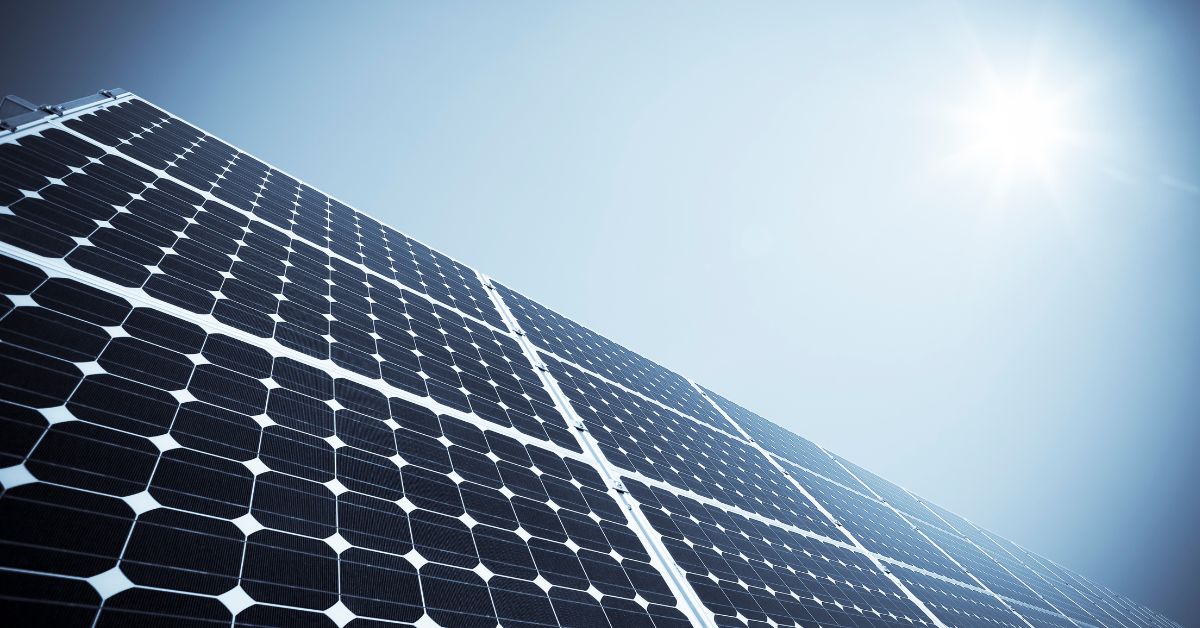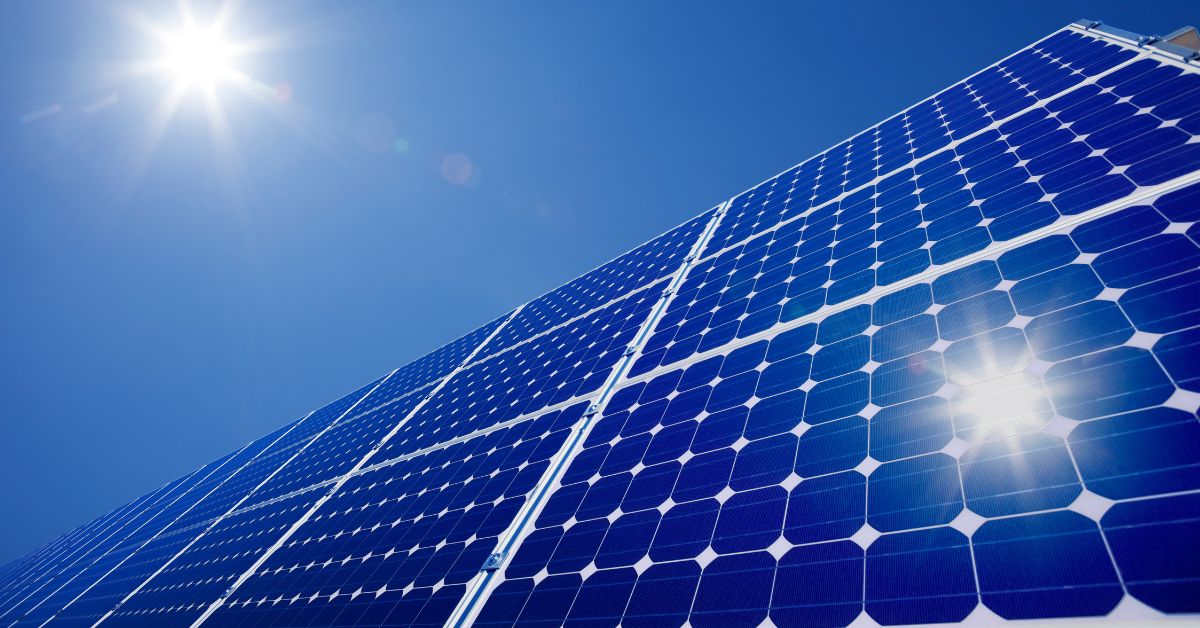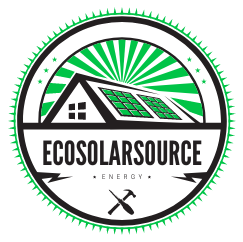Solar Panel Efficiency Improvements
Solar panel efficiency improvements have revolutionized renewable energy, enabling more power to be harvested from the same surface area. Innovations include advanced materials like perovskite and multi-junction cells, which capture a broader spectrum of sunlight.
Anti-reflective coatings and bifacial panels increase light absorption, while smart tracking systems optimize solar exposure by adjusting panel angles throughout the day. Improvements in energy storage, such as solid-state batteries, enhance overall system efficiency. Nanotechnology and AI-driven maintenance also play key roles in boosting performance, making solar energy more accessible, cost-effective, and capable of meeting growing global energy demands with minimal environmental impact.
Table of Contents
Solar Panel Efficiency Improvements: Innovations and Advancements
Solar energy has transformed the landscape of renewable energy, positioning itself as a primary alternative to fossil fuels. The rise in demand for sustainable energy solutions is largely driven by the need to combat climate change, reduce carbon emissions, and provide energy independence. At the heart of this renewable energy revolution are solar panels, devices that convert sunlight into electricity. However, one of the most critical challenges in solar technology has been improving efficiency—ensuring that solar panels capture and convert as much sunlight as possible into usable energy.

This article explores the advancements and innovations in solar panel efficiency, shedding light on both technological and practical strategies that are pushing solar power to new heights. We’ll delve into material science, design improvements, new cell structures, and operational optimizations that contribute to efficiency gains.
Understanding Solar Panel Efficiency
Solar panel efficiency refers to the percentage of sunlight that the panels can convert into electricity. This ratio is significant because the sun provides a vast amount of energy, but not all of it is captured. Traditional solar panels, for instance, typically convert about 15-20% of the sunlight they receive into usable electricity. This means that a substantial amount of energy remains untapped.
Factors influencing solar panel efficiency include:
- Material Type: The type of photovoltaic material used in solar cells (e.g., monocrystalline, polycrystalline, thin-film) impacts efficiency.
- Cell Structure: The arrangement and design of solar cells play a crucial role in how much sunlight is absorbed and converted.
- Environmental Conditions: Temperature, shading, and orientation all impact the effectiveness of solar panels.
- Degradation: Solar panels naturally degrade over time, reducing their efficiency. The rate of degradation is influenced by factors like environmental exposure and the quality of materials.
Innovations in Solar Cell Materials
One of the most significant areas of improvement in solar panel efficiency is related to the materials used in constructing the cells. Historically, silicon has been the material of choice, but research into new materials is pushing the boundaries of what’s possible.
1. Monocrystalline vs. Polycrystalline Silicon
- Monocrystalline Solar Cells: Monocrystalline panels are made from single-crystal silicon and are known for their high efficiency and longevity. Because of their uniform structure, they are more efficient at converting sunlight into electricity, with efficiency rates typically ranging from 18% to 22%. This makes them ideal for residential and commercial installations where space is limited.
- Polycrystalline Solar Cells: Polycrystalline panels, made from silicon fragments melted together, are generally less expensive but also less efficient. Efficiency rates typically fall between 15% and 17%. However, continued improvements in manufacturing processes are narrowing the efficiency gap between monocrystalline and polycrystalline cells.
2. Perovskite Solar Cells
One of the most exciting developments in solar panel technology has been the introduction of perovskite solar cells. Named after the perovskite mineral structure, these cells are cheaper to produce than silicon-based panels and are capable of reaching similar or even higher efficiency levels. Current research has seen perovskite solar cells achieve efficiency levels upwards of 25%, with some experimental designs pushing even higher.
Perovskites are advantageous because they are flexible and lightweight, making them ideal for a wide range of applications, from rooftop installations to portable solar devices. Moreover, they can be tuned to absorb different wavelengths of light, enabling higher efficiency in low-light conditions.
3. Tandem Cells
Tandem solar cells combine different photovoltaic materials in layers to capture a broader spectrum of sunlight. Traditional solar cells primarily convert light in the visible spectrum, but tandem cells capture energy from both the visible and infrared spectrums, increasing the overall efficiency.
A popular tandem design combines silicon with perovskite cells, utilizing silicon’s proven performance in the visible spectrum while relying on perovskite to capture infrared light. This combination has resulted in tandem cells that exceed 30% efficiency in laboratory settings, making them a promising option for future commercial use.
4. Quantum Dot Solar Cells
Quantum dots are nanoscale semiconductor particles that have unique electrical properties. When applied to solar cells, quantum dots can increase the efficiency by absorbing a broader range of sunlight and converting it into electricity.
Quantum dot technology is still in its experimental stages, but it has already shown promise by offering the potential for efficiency improvements without dramatically increasing manufacturing costs. Additionally, quantum dots can be incorporated into flexible materials, potentially allowing for new and innovative solar panel designs.
5. Thin-Film Solar Cells
Thin-film technology involves applying photovoltaic materials in thin layers, which are often only a few micrometers thick, onto a substrate. These materials can include cadmium telluride (CdTe), copper indium gallium selenide (CIGS), or amorphous silicon.
While thin-film solar cells are typically less efficient than their crystalline silicon counterparts, they offer several advantages, including lower manufacturing costs and greater flexibility. Thin-film cells are especially useful in applications where weight and flexibility are important, such as on vehicles or portable electronics. Efforts to improve thin-film efficiency are ongoing, with the goal of making them competitive with traditional silicon-based panels.
Design and Structural Innovations
In addition to improvements in photovoltaic materials, there have been numerous design and structural innovations aimed at enhancing solar panel efficiency. These advancements range from changes in the way panels are constructed to the implementation of new technologies that optimize how solar panels operate in real-world conditions.

1. Bifacial Solar Panels
One of the simplest but most effective design innovations in recent years has been the development of bifacial solar panels. Traditional solar panels only capture sunlight from one side (the side facing the sun), while bifacial panels are designed to absorb light from both sides. This allows for the capture of reflected sunlight from the ground or surrounding surfaces, boosting energy production by up to 30%.
Bifacial panels are particularly effective in areas with reflective surfaces like snow or sand, or when mounted on rooftops with highly reflective materials. They are also durable and typically have a longer lifespan than traditional panels.
2. Passivated Emitter and Rear Cell (PERC) Technology
Another significant advancement in solar panel design is PERC technology. PERC panels incorporate an additional layer on the rear of the solar cell that reflects light back into the cell, allowing for more sunlight to be captured and converted into electricity. This reflective layer improves the overall efficiency of the panel, with PERC cells achieving efficiency levels of 20-23%, higher than traditional monocrystalline cells.
PERC technology is becoming increasingly popular in residential and commercial solar installations due to its cost-effectiveness and ease of implementation in existing manufacturing processes.
3. Shingled Solar Cells
Shingling is a method of arranging solar cells in a way that minimizes the space between them, effectively increasing the surface area of the panel. Shingled solar cells overlap each other, much like shingles on a roof, which reduces the gaps where sunlight would otherwise be lost.
This design not only improves the aesthetic appearance of the panels but also enhances their efficiency. Shingled solar panels can deliver efficiency improvements of 2-4% compared to traditional panel designs, and they are becoming more popular in high-performance applications.
4. Multi-Junction Cells
Multi-junction solar cells take advantage of different materials to capture a wider range of the solar spectrum. Each layer of a multi-junction cell is designed to absorb light from a specific portion of the spectrum, which results in higher overall efficiency.
Originally developed for use in space applications, multi-junction cells have demonstrated efficiency levels exceeding 40% in laboratory conditions. Although they are expensive to produce, ongoing research aims to make multi-junction technology more affordable for terrestrial use.
5. Concentrated Solar Power (CSP)
Concentrated Solar Power (CSP) is a technology that uses mirrors or lenses to focus sunlight onto a small area, generating heat that is then used to produce electricity, typically through a steam turbine. While CSP systems are different from traditional photovoltaic panels, they are often used in tandem to improve overall efficiency.
CSP systems can achieve much higher efficiency than standard photovoltaic panels, especially in large-scale solar farms. By concentrating sunlight, these systems can reduce the number of photovoltaic cells required, thus lowering material costs and increasing energy output per square meter.
Operational Optimizations for Higher Efficiency
Beyond technological innovations, several operational strategies can enhance the efficiency of solar panel installations. These strategies are often related to system design, maintenance, and real-time optimization of energy production.
1. Tracking Systems
One of the most effective ways to increase solar panel efficiency is through the use of solar tracking systems. These systems automatically adjust the angle of the solar panels throughout the day to ensure they are always facing the sun. By maintaining an optimal angle, tracking systems can increase energy production by 25-35% compared to stationary panels.
Tracking systems are especially useful in large-scale solar farms, where the cost of installation can be offset by the increased energy yield. However, they require additional maintenance and are more expensive to install than traditional fixed systems.
2. Anti-Reflective Coatings
A significant amount of sunlight is lost due to reflection off the surface of solar panels. By applying anti-reflective coatings, manufacturers can reduce this loss and increase the amount of sunlight absorbed by the cells. Modern anti-reflective coatings can improve efficiency by 3-5%, and many panels now come with these coatings as standard.
3. Cooling Systems
Heat can reduce the efficiency of solar panels, as higher temperatures decrease the voltage output of photovoltaic cells. Cooling systems—which range from passive designs that improve airflow to active systems that circulate liquid or air—help maintain optimal operating temperatures, especially in hot climates. By preventing overheating, cooling systems can preserve the efficiency of solar panels and extend their lifespan.
4. Cleaning and Maintenance
Dust, dirt, and debris can accumulate on the surface of solar panels, reducing the amount of sunlight that reaches the cells. Regular cleaning and maintenance can prevent this buildup and ensure that panels operate at peak efficiency. Robotic cleaning systems are increasingly being used in large-scale solar farms to automate this process and reduce labor costs.
5. Energy Storage Integration
Pairing solar panels with energy storage systems, such as batteries, can optimize the use of generated electricity by storing excess energy for use during times of low sunlight. By smoothing out fluctuations in energy production, storage systems improve the overall efficiency of solar installations and make solar power more reliable for both grid-connected and off-grid applications.
Future Trends in Solar Panel Efficiency
The future of solar panel efficiency looks promising, with ongoing research and development expected to yield even greater improvements in the coming years. Some of the key trends that are likely to shape the future of solar energy include:

- Next-Generation Photovoltaic Materials: Researchers are exploring new materials, such as organic photovoltaics and nanostructured materials, that have the potential to revolutionize solar cell efficiency.
- Advanced Manufacturing Techniques: Innovations in manufacturing, such as 3D printing and roll-to-roll production, could reduce the cost of high-efficiency solar cells and make them more accessible to a wider market.
- Integration with Smart Grids: As solar energy becomes more integrated with smart grid technology, real-time data analysis and AI-driven optimizations could further enhance the efficiency of solar panel systems.
- Solar Panel Recycling: As the global installed base of solar panels grows, recycling will become an important factor in maintaining the sustainability of the industry. Efficient recycling processes will ensure that valuable materials are recovered and reused, reducing waste and environmental impact.
FAQs About Solar Panel Efficiency Improvements
1. What are the most recent technological advancements improving solar panel efficiency?
New technologies, such as bifacial solar panels, perovskite materials, and tandem cells, have shown significant potential to boost solar panel efficiency. These innovations allow panels to capture more sunlight and convert it into energy more effectively.
2. How do the angle and positioning of solar panels affect their efficiency?
Solar panels perform best when positioned to capture the maximum sunlight, which depends on geographic location and time of year. Tracking systems, which adjust panel angles throughout the day, can further improve efficiency.
3. Can cleaning and maintaining solar panels significantly improve efficiency?
Yes, dirt, debris, and bird droppings can reduce the amount of sunlight hitting the solar cells, lowering output. Regular cleaning and maintenance can restore or improve efficiency, sometimes by as much as 10-15%.
4. What role does temperature play in solar panel efficiency?
Contrary to what some believe, higher temperatures can decrease solar panel efficiency. Solar panels operate more efficiently in cooler conditions as extreme heat can reduce their energy conversion rate.
5. Are there any coatings or treatments available to improve solar panel efficiency?
Anti-reflective coatings and self-cleaning films are emerging options that can improve panel efficiency by reducing the amount of sunlight reflected away from the panel and keeping surfaces cleaner for longer.
6. How do energy storage solutions impact overall solar energy efficiency?
Pairing solar panels with energy storage systems like lithium-ion batteries ensures that energy generated during peak hours is stored and used later, optimizing the efficiency of solar power use.
7. Can installing solar panels on different surfaces or building materials improve efficiency?
Yes, solar panels can now be integrated into building materials like windows, rooftops, or even roads. These innovative designs can help increase overall solar energy capture by utilizing otherwise unused spaces.
8. What are the limitations of solar panel efficiency improvements?
The theoretical efficiency limit for conventional silicon-based panels is around 33% (Shockley-Queisser limit). However, hybrid systems like tandem cells have the potential to surpass this, though practical and cost limitations still exist.
9. How do energy losses in transmission affect the efficiency of solar power systems?
Even with efficient solar panels, energy losses can occur during transmission and conversion. Using high-efficiency inverters and minimizing cable distances can help reduce these losses.
10. What can consumers do to maximize the efficiency of their home solar systems?
Homeowners can ensure optimal panel placement, regularly clean and maintain panels, use energy-efficient appliances, and install solar trackers or micro-inverters to improve overall system efficiency.
The quest to improve solar panel efficiency is driven by the need to maximize energy output while minimizing costs and environmental impact. Advances in materials science, cell design, and operational strategies have already yielded significant efficiency gains, and ongoing research promises to push solar technology even further.
With the world increasingly turning to renewable energy sources, solar power is set to play a key role in the global energy transition. By continuing to invest in innovations that improve the efficiency of solar panels, we can unlock the full potential of solar energy and pave the way for a sustainable and clean the energy future.
Click here to learn more about Solar Panel Efficiency Improvements
Click here to learn more about Accelerated Depreciation Solar

